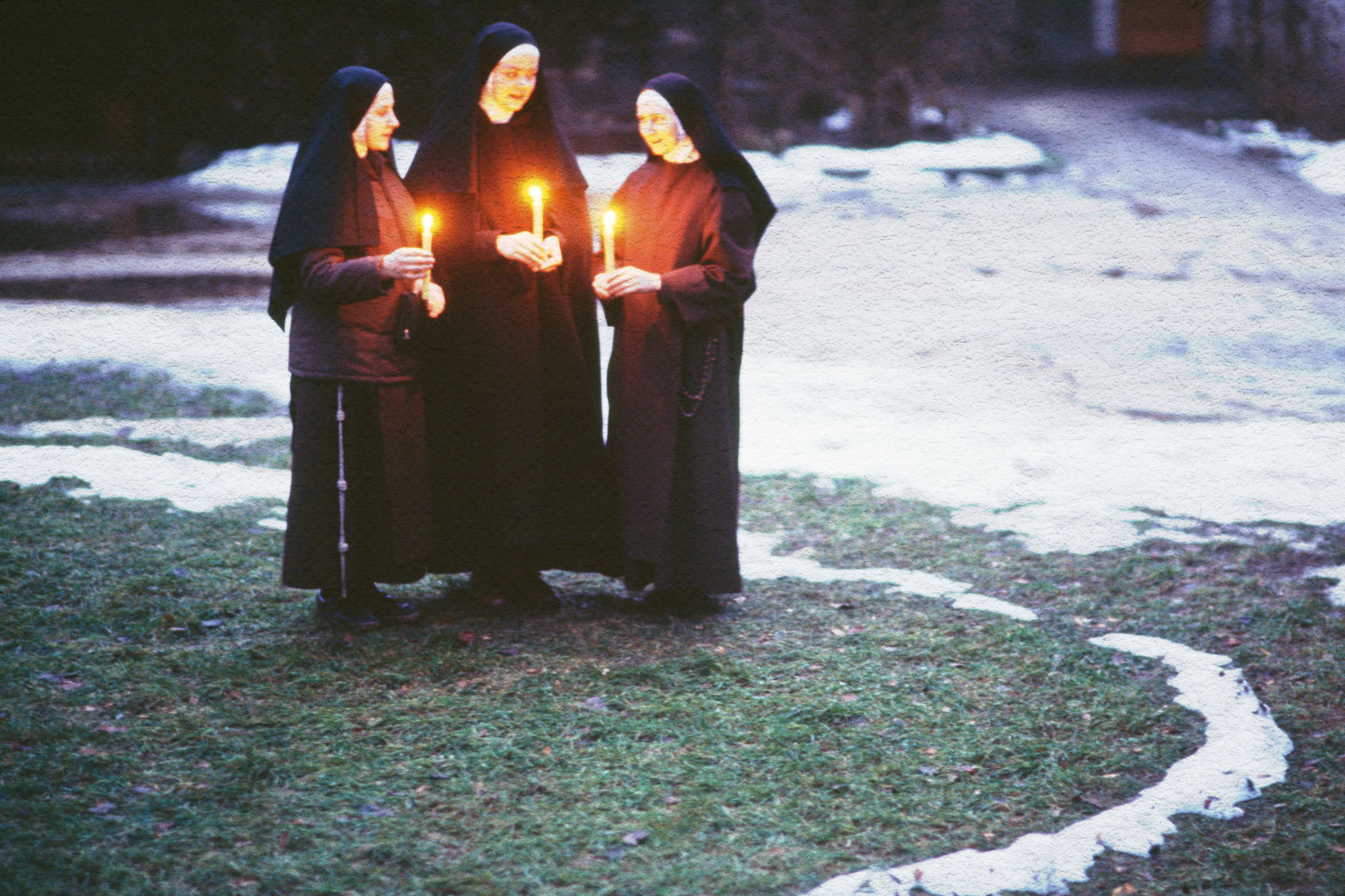It is never people, always buildings. Faces change, time blurs them, but – unless they undergo a complete makeover – buildings remain pretty much the same, bar a few coats of paint. Along the second-floor corridor lined with arched windows that overlook the street. Buses grind by below. Up the last short steep staircase and along the very top corridor, which is narrower and lined with books. They call it the library and I am often here, tucked into the window seat reading, but otherwise heading for the arched door – everything is arched here – at the far end. It opens on to a low-ceilinged room with roof lights through which the sun seems always to be shining. Wooden floor, tall cupboards and shelves housing drawing boards, reams of paper – cartridge paper, sugar paper, Kraft paper, A1, A2 – boxes of pens, crayons, chalk, charcoal. Scissors, tables, easels, guillotines, standing desks. Not many chairs, just low benches.
Paintings, drawings, pinned to the wall on cork boards, sketches of ballet costumes, portraits, bunches of wild flowers, individual petals and leaves, every thread of vein outlined, the tops of roofs and the spire of the church on the hill behind.
The art room. The quietest, calmest, most peaceful room in the whole large convent school, the room where every worry and fret and problem falls from your shoulders and any scowl or frown is smoothed from your face as you enter. Even time stops and ceases to matter.
It is best of all when Sister Cecilia is here, at her table in the corner with light falling on to her drawing or painting, collage or embroidery, or tiny papier-mâché model of an animal, a statue of the Virgin Mary, the Vatican, a ship with cotton sails. Sister Cecilia, tallest of the community of nuns, with their heavy black woollen robes and white wimples, big wooden crucifixes around necks, rosary beads clicking softly as they move about. Whatever stories are told about nuns – bitter, warped women with cruel, repressed minds and hollow hearts – I only knew one in my entire convent education who fitted that particular bill, but the saintly, happy, loving presence of Sister Cecilia more than cancelled her out.
I get the feeling Sister Cecilia would not have liked felt-tips. Too superficial. Too glib
I loved her. We all loved her because she loved us and all her fellow nuns too, and the convent cat and the birds in the garden. She was carved and formed out of love. I wondered about her then, and I still do – where she had come from, why she was there, what her life had been before taking religious vows. She would never see her family again, unless an immediate relative died – a parent or sibling – and then she would be allowed to travel accompanied by another sister.
But there was no bitterness or even sorrow in her. She was serene, she could laugh until the tears rolled down her cheeks and she had to fetch a hankie from somewhere in the voluminous depths of her habit. She was always full of praise for our artwork, making simple, spot-on suggestions for transforming, alterations and improvements, basking in the sun shining on her head like a halo. And a halo was way less than she deserved.
I was not especially good at art, but Sister Cecilia made me feel that one day I might be. I loved to watch her pick up a B4 or a scraping of charcoal and, with the three or four swift lines and a light rub, turn it into a thing of interest, even beauty. ‘Ask it a question,’ she would say, touching one’s paper. ‘Look at it and let it tell you. Listen as well as look. And don’t rush.’
I only learned how to draw one thing, from the dozens of little tricks she taught us about making a mark on paper become whatever you wanted. I can still turn an ‘8’ into a fish. I can create shoals of tiny 8s to fishes, swimming across a page, and in idle moments, do. If I have a handy felt-tip I colour them in, though I get the feeling Sister Cecilia would not have liked felt-tips. Too superficial. Too glib.
I had some very good school friends – one of whom I still have, almost 80 years after we met walking in at the kindergarten entrance together. As in every school, perhaps more markedly so then, there were some good teachers and a few bad, and one sadist. Maybe I will bring myself to write about her some day. But because there was also Sister Cecilia, one saint, loved and loving and wholly good, there was protection. Her art room was a haven, a quiet place of happy creativity, a refuge from noise, lukewarm cabbage and maths. I could have lived there. I never wanted to go home.








Comments